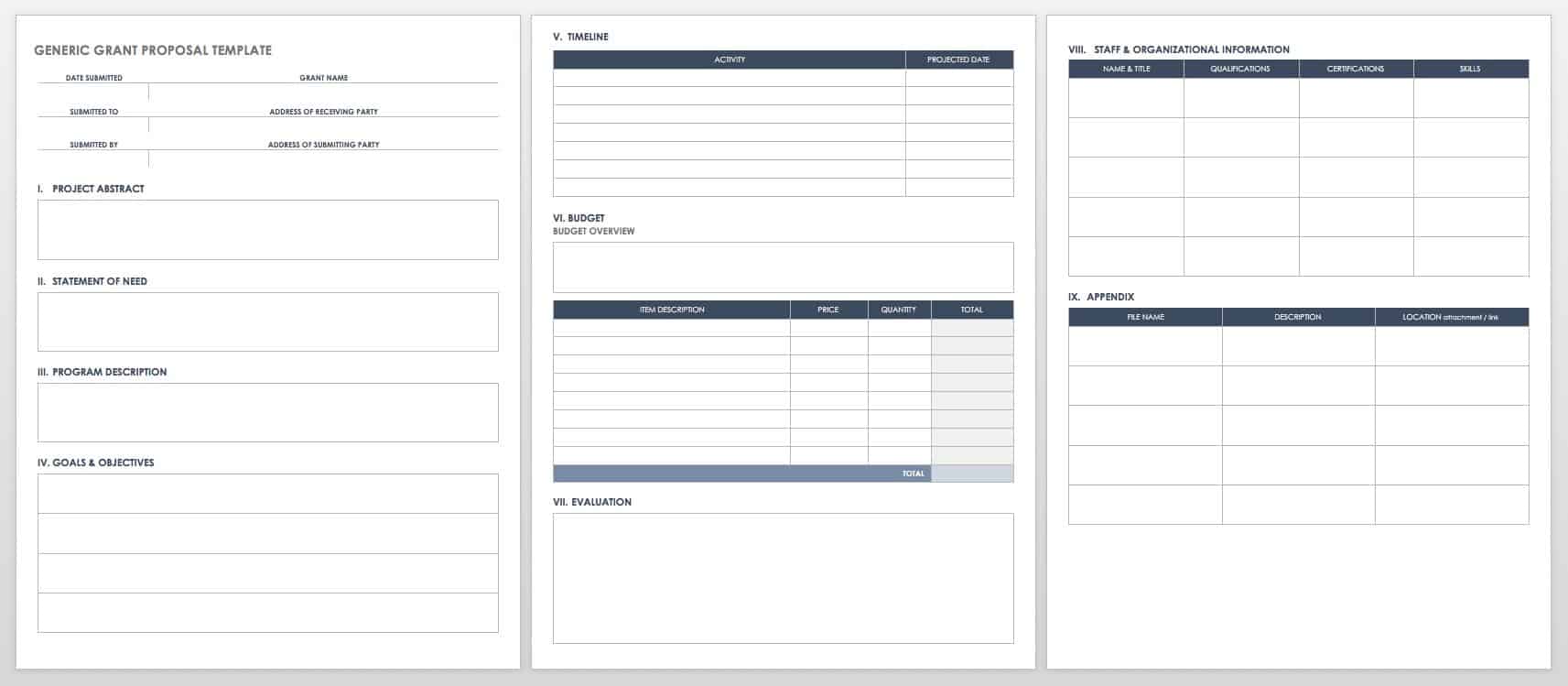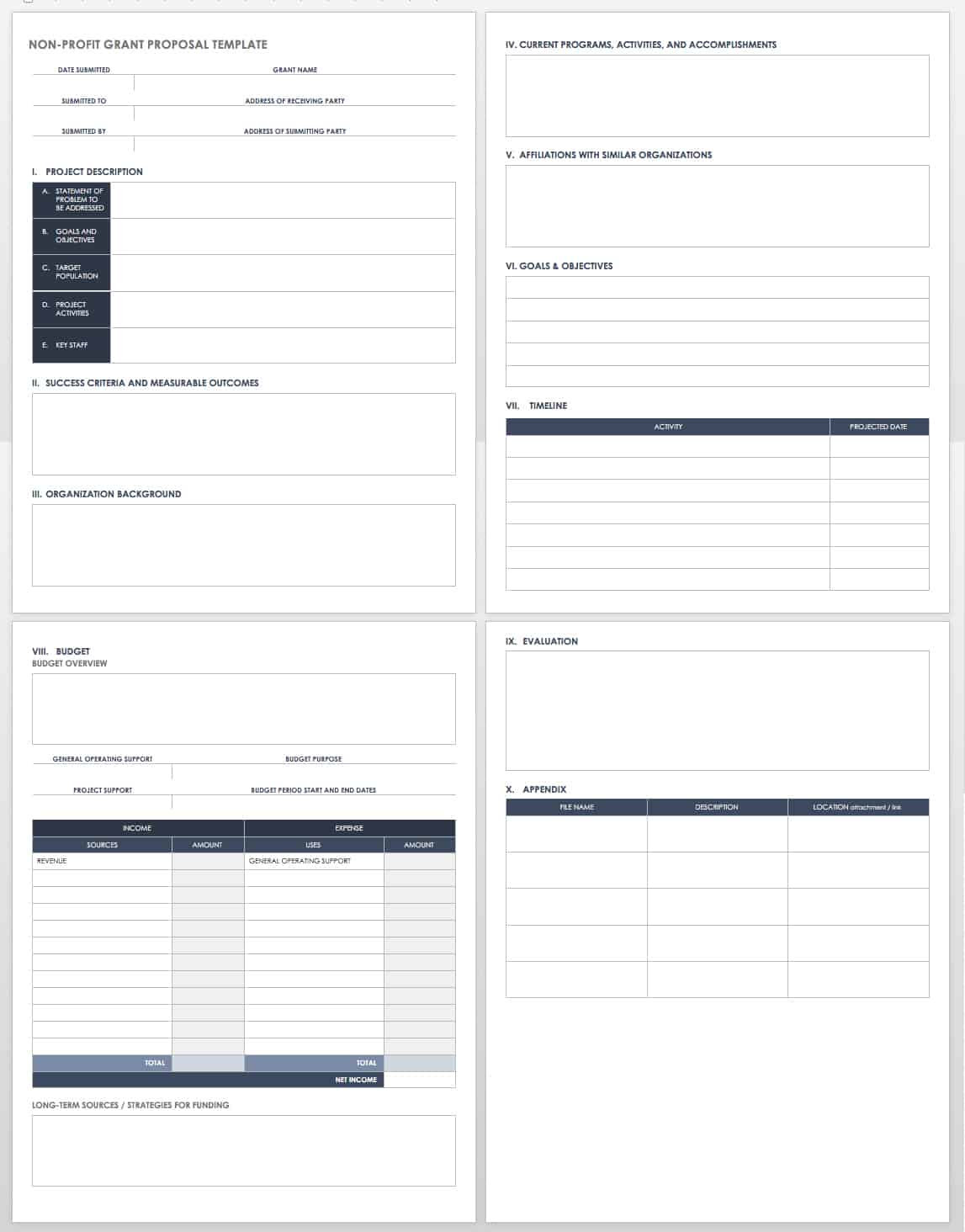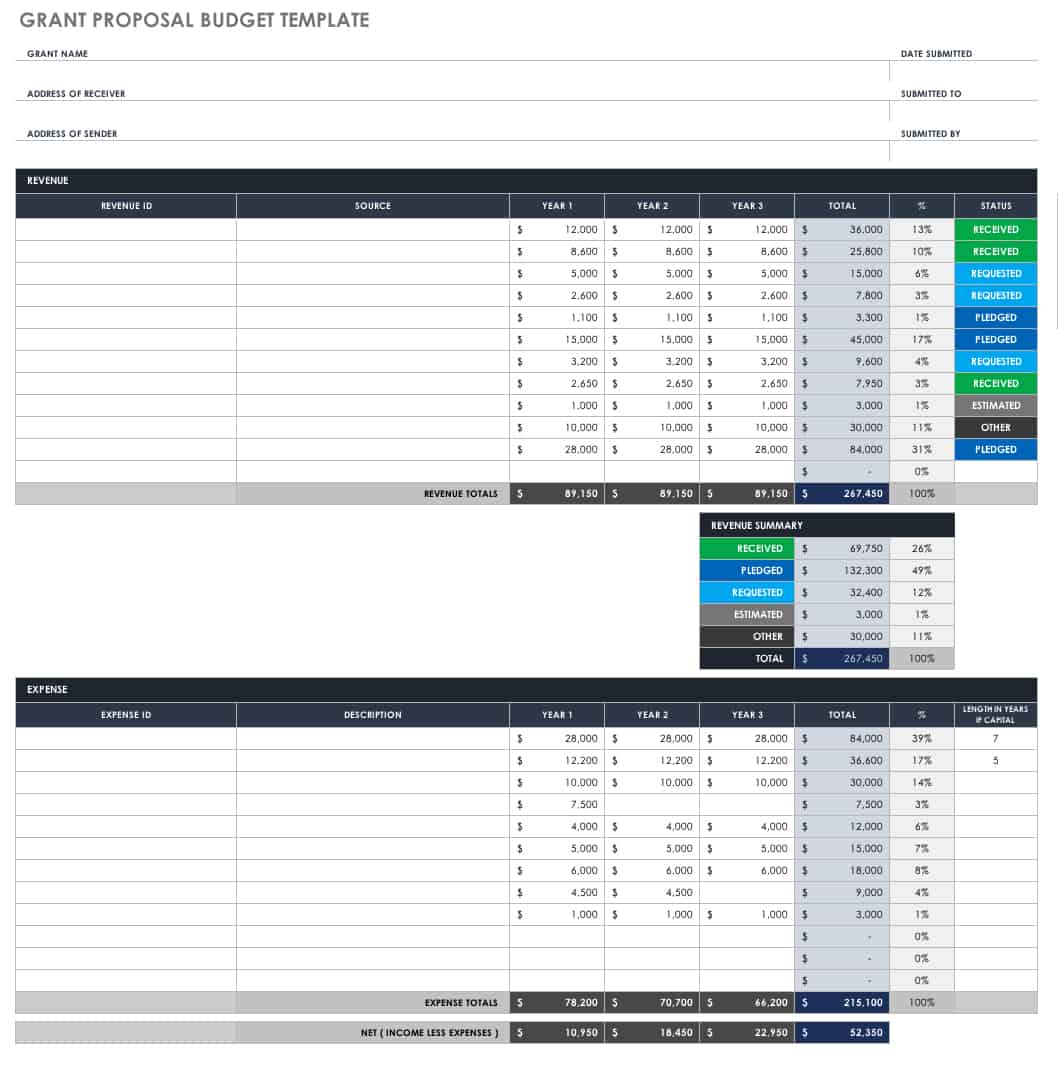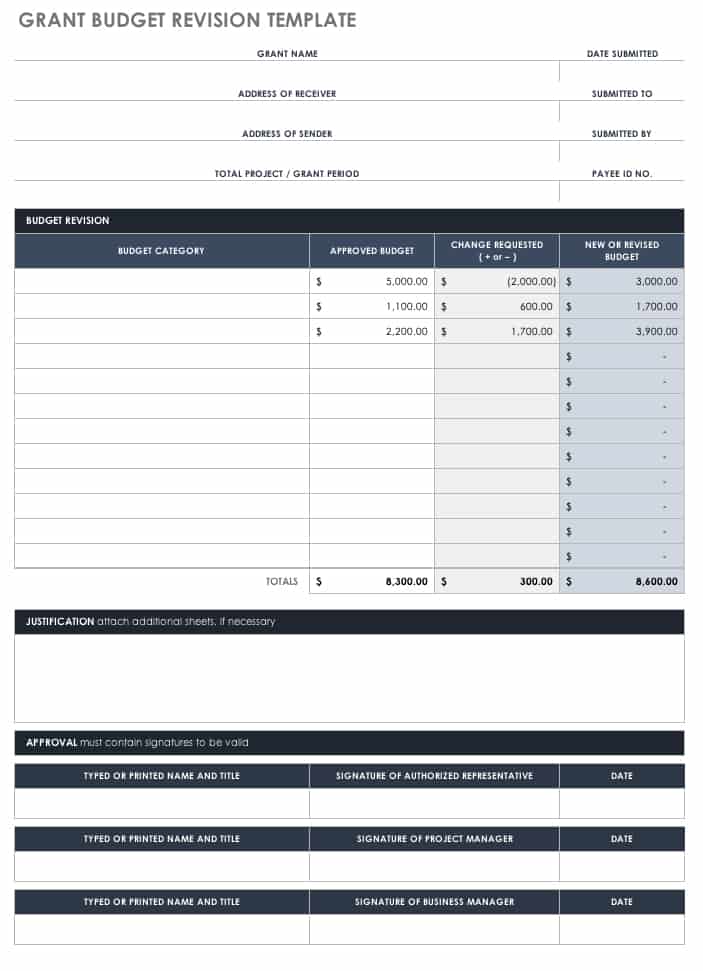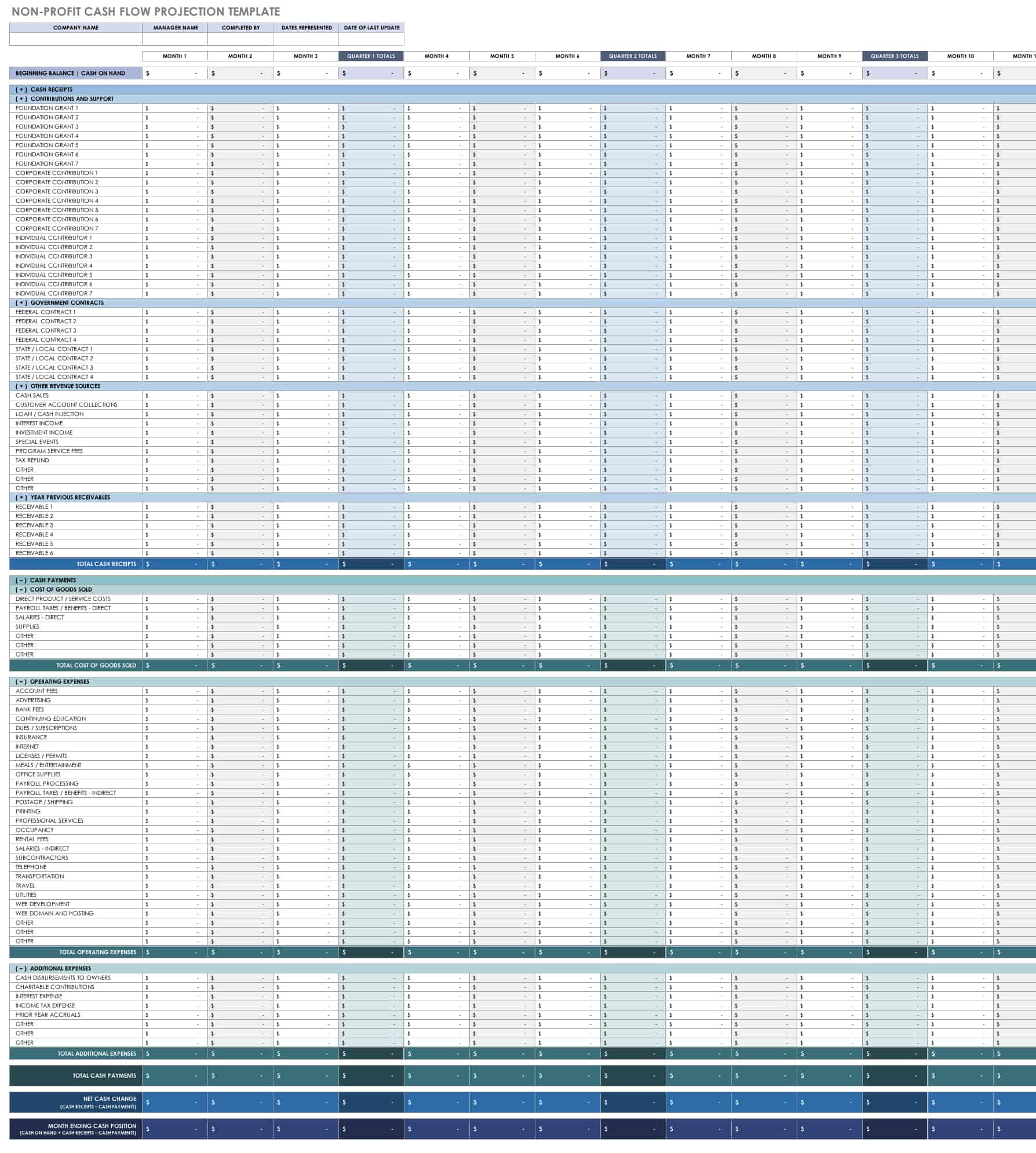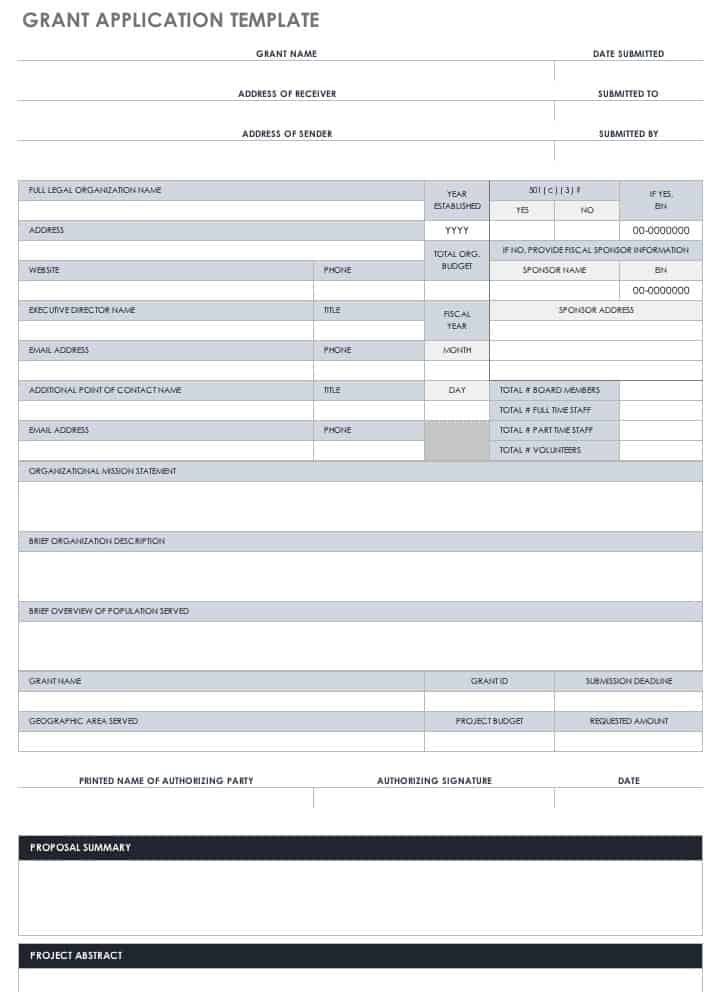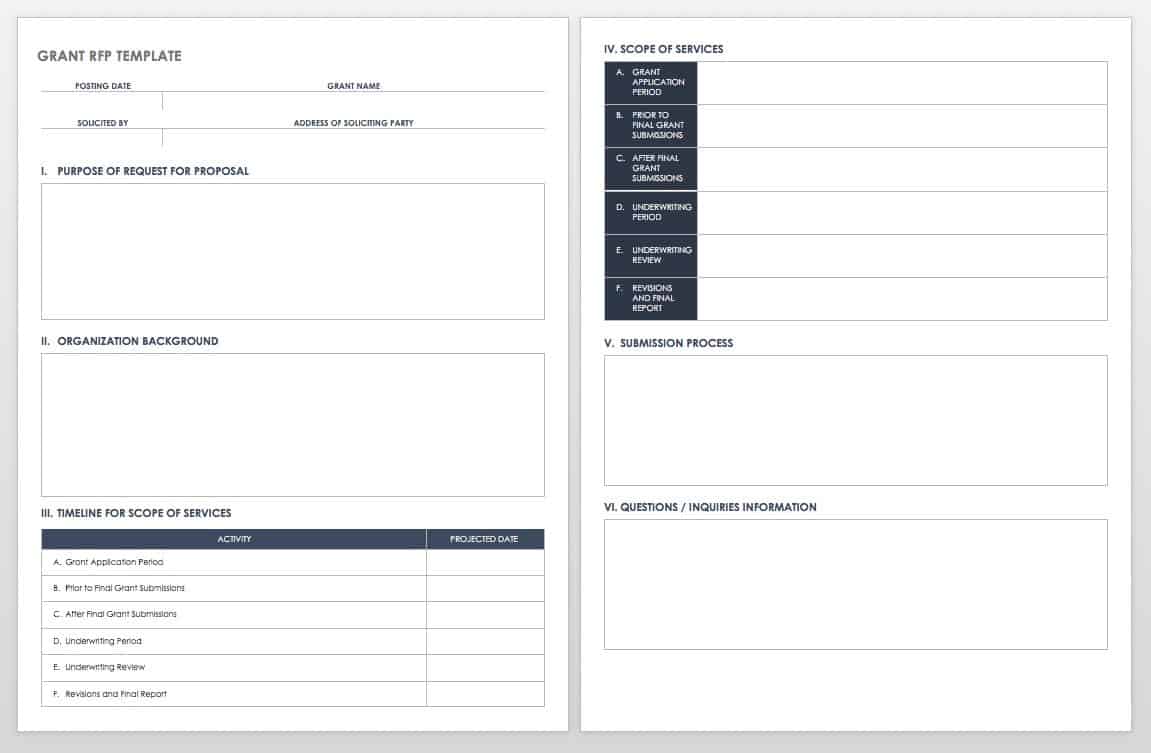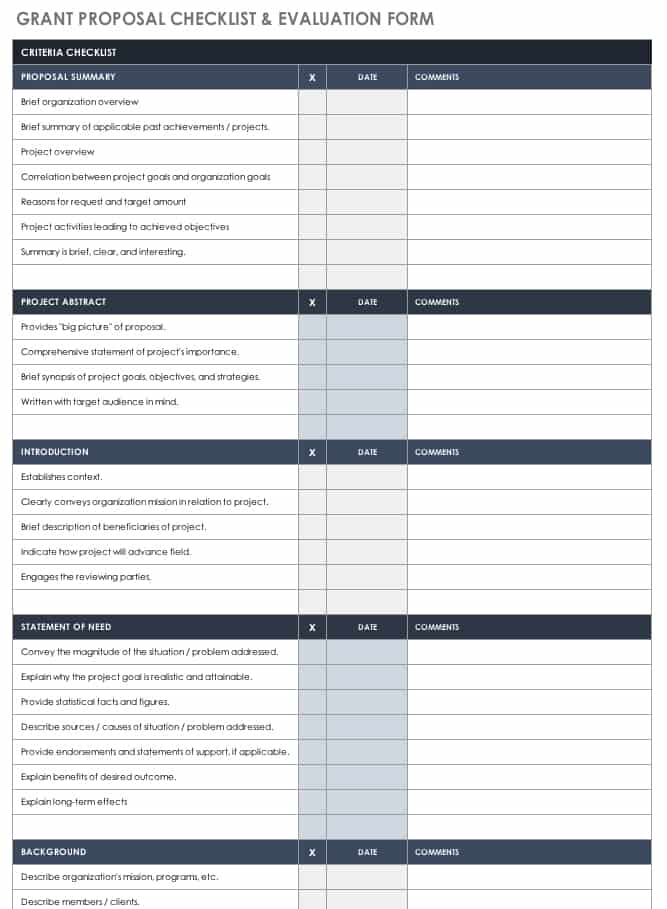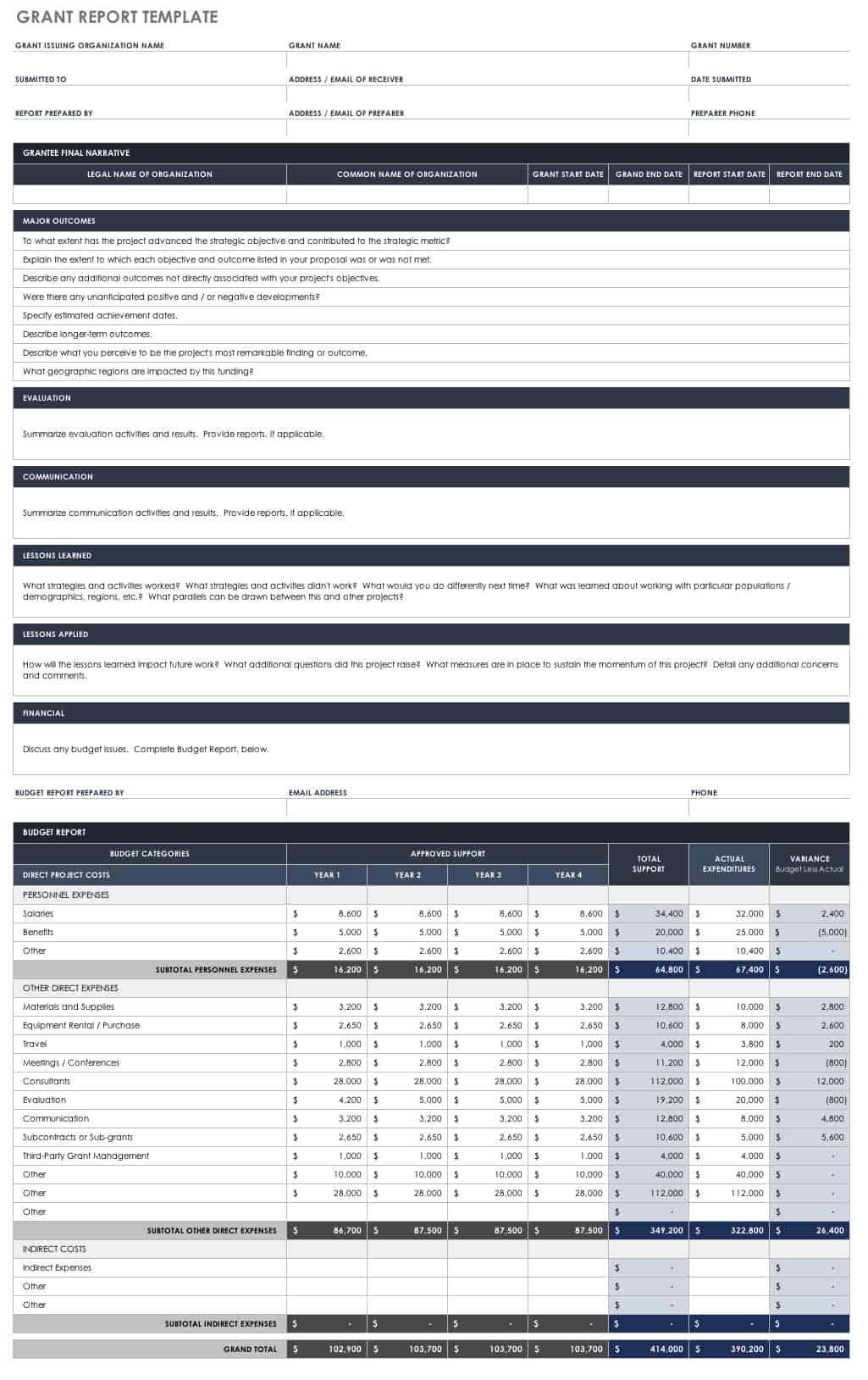Grant Proposal Templates
Generic Grant Proposal Template
Use this template as a guide for preparing a grant proposal. It includes typical sections, such as a statement of need, project description, goals and objectives, and budget. There’s also room to add a detailed timeline. This template provides a basic outline that you can easily modify for a range of proposals.
Download Generic Grant Proposal Template
Nonprofit Grant Proposal Template
Many nonprofit organizations rely on grants to pay for operating expenses and provide community services. This grant proposal template for nonprofits includes sections for adding organizational background information, details about the community or population that will be served, measurable goals, and more. Remove or add sections as needed to create a customized template.
Download Nonprofit Grant Proposal Template
Research Grant Proposal Template
Present your hypothesis, literature review, research plans, and projected outcomes with this research grant proposal. This template could be adjusted to suit a scientific research proposal or academic grant application. Depending on the application requirements, you may be able to submit this document as a formal proposal, or you can use it to compile and organize all of the information that will go into your final proposal.
Download Research Grant Proposal Template
Technology Grant Proposal Template
This technology grant proposal template is geared toward teachers and schools seeking funding for technology to use in the classroom. You can use the template to describe educational goals, technology needs, program sustainability, and budget requirements. The proposal also includes a timeline section to add a detailed schedule.
Download Technology Grant Proposal Template
Grant Budget Templates
Grant Proposal Budget Template
Create an itemized grant proposal budget that shows income and expenses over the course of a given time period. Enter funding sources and amounts along with specific costs, and the template will automatically calculate the totals. You can use this template for planning purposes, or submit it as part of a larger grant proposal.
Download Grant Proposal Budget Template
Grant Budget Revision Template
If you need to request a budget revision, this template is designed to show how funds will be adjusted by reducing the amounts allotted to one or more categories and increasing funds to others. Some grant makers require a revised budget so that they can approve how funds will be used. This template also includes room for adding organization and grant details.
Download Grant Budget Revision Template
Nonprofit Cash Flow Projection Template
Nonprofits can use this cash flow template for financial planning over a 12-month period. The template shows revenue and expenses on a monthly, quarterly, and annual basis. The template also lists common funding sources along with operating costs, which can be edited to accommodate any type of organization.
Download Nonprofit Cash Flow Projection Template
Grant Application Templates
Grant Application Template
This template is intended for grant makers who want to create a grant application. It has sections for collecting applicant contact information, organizational details, and a thorough proposal, including a budget. Customize the application to cover whatever questions and information need to be reviewed to accurately assess a proposal.
Download Grant Application Template
Grant RFP Template
Grant makers can follow this outline to create a request for proposal template. Include submission instructions, agency background information, the timeline for reviewing proposals, and any requirements for proposal content and formatting. Applicants will also want to know what criteria will be used for evaluating proposals.
Grant Report and Evaluation Templates
Grant Proposal Checklist and Evaluation Form
Once you have completed a proposal, use this checklist to ensure that all application requirements have been met and to evaluate the proposal’s quality and effectiveness. Consider soliciting feedback on your proposal from stakeholders or others who may be less familiar with the project and, therefore, more objective. Taking a moment to review a proposal may help reduce errors or omissions that could cost more time and money in the long run.
Download Grant Proposal Checklist and Evaluation Form
Grant Report Template
Grantees may be required to submit an interim or final report describing the progress and outcomes of a project. This simple template provides an outline for creating a comprehensive report, including a financial update that shows how funds have been spent. Grant makers can provide this form to grantees so they have a template to follow for creating a narrative report.
Grant Applications and Eligibility
Grant writing varies across disciplines, and proposals range from lengthy reports to brief letters that summarize project details. A science grant proposal might be 50 pages long and include a thorough literature review, background information for key personnel, research methodology, and more. The National Science Foundation, for instance, has extensive guidelines for grant applications, and its policies and procedures are outlined in a comprehensive guide for grant applicants.
An application for a global grant from the Rotary Club, on the other hand, is much shorter, and the information required depends on the type of project to be funded. The scope of a project, the amount of funding being awarded, the type of grant maker, and other factors influence what is required from grant seekers.
Businesses are generally not eligible for grants unless they qualify for funding through local government initiatives or are involved in research and development projects that are relevant to federal programs. Some states offer small-business grants to woman- or minority-owned businesses as well as for certain industries. If your company qualifies for federal or state funding, creating a business grant proposal would entail following the guidelines for a specific grant.
Some organizations will accept a common grant application form, which allows for a standardized proposal that saves time for both grant makers and grant seekers. When researching grant opportunities, it is important to understand and follow the application requirements so that your efforts aren’t undermined by technical errors, missing information, or mistakes in the submission process.
Mastering the Grant Writing Process
Writing grants may seem to adhere to a series of linear steps, but unless you are applying for a one-time grant and will not use grant funding in the future, grant writing is a circular process that follows a funding cycle. The process begins with a goal or need that gets translated into a proposal, which is reviewed by the agency or foundation supplying the grant, and then accepted or rejected.
Whether the proposal is accepted or not, the grant writing process continues into the next funding cycle as you revise and resubmit earlier grants or apply for new ones. Nonprofit organizations, ongoing research studies, and other groups that rely on grants as a primary funding source may need to keep a calendar and dedicate a writer to planning and securing grants.
To write an effective proposal, it is helpful to not only find grant opportunities that are relevant to your project, but also understand the funding source and gear your proposal to that audience. If a funder is available to meet in person prior to your organization submitting a proposal, that can go a long way toward providing a more personal context to your project and developing an ongoing relationship. Above all, the proposal should describe a project that can realistically be carried out by the applicant based on experience, qualifications, and financial resources.
As stated earlier, grant proposals vary widely and the content is largely dictated by the application requirements of a particular funder. However, there are commonalities among grant proposals. Here is a look at some of the information typically included:
- Cover Letter: Unless you have already had a face-to-face meeting or other contact with a funder, the cover letter is the first impression of your organization and project. Provide a brief summary that emphasizes your vision and objective.
- Proposal Summary: Although included at the beginning of a proposal, an abstract or executive summary section is often written last. It provides a brief overview of a project, including how the project fits with funding criteria.
- Literature Review: Academic and scientific research grants typically include a literature review that lists and evaluates sources of preliminary research that are related to the project.
- Statement of Need: The need statement is your opportunity to show a funder why your project is important. It explains the issue, and also provides background information and relevant research or evidence to support your proposal. You present the argument for why your project should be awarded funding over other proposals.
- Organization Description and Staff: Organizational history, background and qualifications for key personnel, and a program’s mission and track record for similar projects may all be important to illustrate a trustworthy reputation and your ability to successfully implement the proposed project. You may need a separate section to outline specific roles and responsibilities.
- Project Narrative: This is where you would include a lengthier project or program description, providing a detailed look at what the project entails, specific goals, and other information. You may include some of the sections listed here, such as personnel information, objectives, and measurements for success.
- Goals and Objectives: Breaking down goals into definitive and measurable results outlines the vision for a project as well as tangible outcomes. Grant proposals from nonprofits and other organizations involved in community projects may also include a description of the community being served, information on how it will benefit, and research on the potential for community involvement.
- Methods and Strategies: Grant makers will want to see how you plan to achieve goals and objectives. You may decide to include a logic model, which offers a condensed version of your proposal outline, to provide a visual representation of the key elements of your project and how they will lead to the intended outcomes. Clarify connections among methodology, objectives, and outcomes.
- Project Timeline: A timeline for your action plan can help funders visualize the stages of your project. This may be especially useful for research projects carried out over the course of several years. You may also want to include a budget timeline.
- Evaluation: Create an evaluation plan and describe what metrics will be used to assess a project’s effectiveness or impact.
- Sustainability Plan: If a project will continue into the future, create a plan for ongoing sustainability after grant funds have been used — doing so shows funders that a project is viable for the long term.
- Other Funding: Grant makers may want to see what other sources of funding you expect to receive for your project.
- Budget: The proposal budget shows estimated expenses along with sources of revenue. It provides an itemized look at how funds will be allotted and utilized.
- Appendix: References and additional materials can be included in the appendix.
Before submitting a completed proposal, grant writers can do their own review to ensure that the proposal meets the necessary criteria and application requirements. Grant makers will in turn conduct their review process and select which proposals to fund. Once funding is awarded, the grant maker and the grantee sign an agreement that describes the terms of the grant.
There are many sample grant proposal templates online that provide examples of successful applications. For instance, the National Institutes of Health (NIH) offers a variety of sample proposals for scientific research, as well as small-business funding for research and development.
Top 5 Grant Writing Tips
If you are new to grant writing, here are some tips to keep in mind as you develop your proposals:
- Give yourself plenty of time. Researching grant opportunities and gathering the information needed for an effective proposal can be a time-consuming process. Start earlier than you think you need to, and create a schedule to keep your grant writing process on track.
- Keep trying. If your proposal is rejected, revise it and apply again. Persistence can pay off, and you don’t need to wait for the results of one application before applying for a different grant. Sending proposals to a diverse selection of funders may also increase your chances of being selected.
- Details matter. Be specific about how funding will be used, goals will be achieved, and data will be collected, as well as your timeline of action steps. Grant makers want to know exactly how their money will be used, what impact the project or program will have, and why the project is important.
- Follow the rules. Follow grant application guidelines exactly, including answering required questions, providing requested information, and sticking to a submission timeline.
- Pay attention to formatting. The format of your proposal may be dictated by grant guidelines or a preset application, but make sure it is organized with clear headings. Information should be easily accessible and appropriate for the given audience.
One final tip: Create a reusable template that can be adjusted for a variety of grant applications.
Improve Grant Proposal Management with Smartsheet
Empower your people to go above and beyond with a flexible platform designed to match the needs of your team — and adapt as those needs change.
The Smartsheet platform makes it easy to plan, capture, manage, and report on work from anywhere, helping your team be more effective and get more done. Report on key metrics and get real-time visibility into work as it happens with roll-up reports, dashboards, and automated workflows built to keep your team connected and informed.
When teams have clarity into the work getting done, there’s no telling how much more they can accomplish in the same amount of time. Try Smartsheet for free, today.
